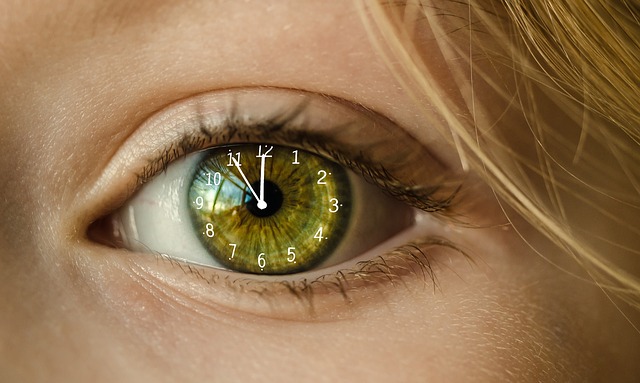Information about the Mahoney Lab.
 The overall goal of the Mahoney lab is to determine when and how endocrine signals regulate biological rhythms. Our research brings together the fields of chronobiology, reproductive biology, and neurotoxicology. Biological rhythms are essential for life as they underlie a myriad of physiological processes from the sleep-wake cycle, metabolism, and immune function, to reproductive cyclicity and hormone secretion. We examine the influence of estradiol, estrogen receptor agonists, botanicals, and endocrine-disrupting chemicals on daily sleep-wake activity patterns, the behavioral and neural responses to light signals, and rhythms in protein and mRNA levels. This research is important as it addresses basic scientific questions such as:
The overall goal of the Mahoney lab is to determine when and how endocrine signals regulate biological rhythms. Our research brings together the fields of chronobiology, reproductive biology, and neurotoxicology. Biological rhythms are essential for life as they underlie a myriad of physiological processes from the sleep-wake cycle, metabolism, and immune function, to reproductive cyclicity and hormone secretion. We examine the influence of estradiol, estrogen receptor agonists, botanicals, and endocrine-disrupting chemicals on daily sleep-wake activity patterns, the behavioral and neural responses to light signals, and rhythms in protein and mRNA levels. This research is important as it addresses basic scientific questions such as:
- When and how do changes in hormone signals program the adult timekeeping system?
- How are sex differences in circadian rhythms regulated by circulating hormones?
We were the first to characterize when and how estrogen signaling mechanisms regulate the expression of behavioral and neural circadian rhythms. This worked has gained attention in the field and our principal investigator has been an invited contributor to several review articles on women’s health and estrogen and was an invited speaker at national conferences. Our work brings a new perspective to understanding how sex differences and hormones regulate biological rhythms in humans and other species.
Our Principal Investigator is Megan Mahoney.
Check out the tabs below or visit our website here to learn more about our current projects.
Project 1: Analyze the impact of endocrine mimics and antagonists on biological rhythms
 Our research is also applicable to human health concerns by determining how environmental contaminants impact the timekeeping system. We are examining how compounds in the environment (phthalates) or in food which mimic estrogen (BPA, genistein) alter circadian rhythms. We are the first to demonstrate that phthalates alter activity levels, distribution of activity across the LD cycle, as well as gene expression in the brain’s master clock. We will expand on this research by examining the developmental impact of these chemicals on clock gene expression in the master clock, and by examining the impacts of additional chemical compounds. These data are significant because they have implications for understanding the impact of environmental toxicants on the fundamental timekeeping system.
Our research is also applicable to human health concerns by determining how environmental contaminants impact the timekeeping system. We are examining how compounds in the environment (phthalates) or in food which mimic estrogen (BPA, genistein) alter circadian rhythms. We are the first to demonstrate that phthalates alter activity levels, distribution of activity across the LD cycle, as well as gene expression in the brain’s master clock. We will expand on this research by examining the developmental impact of these chemicals on clock gene expression in the master clock, and by examining the impacts of additional chemical compounds. These data are significant because they have implications for understanding the impact of environmental toxicants on the fundamental timekeeping system.
Project 2: Developing a novel model of shift work in rats to determine how conflicts in “work” and light:dark schedules affect health.
 In addition to our work with endocrine disruptors, we examine how disruptions to the timekeeping system via shift work impacts reproductive physiology and cognitive function. Female shift workers and transatlantic travelers are at risk for reproductive complications such as reduced conception rates, increased miscarriage rates, babies with smaller birth weight, and dysmenorrhea. This is a significant issue for women’s health as over 3 million women have flexible or shift work schedules.
In addition to our work with endocrine disruptors, we examine how disruptions to the timekeeping system via shift work impacts reproductive physiology and cognitive function. Female shift workers and transatlantic travelers are at risk for reproductive complications such as reduced conception rates, increased miscarriage rates, babies with smaller birth weight, and dysmenorrhea. This is a significant issue for women’s health as over 3 million women have flexible or shift work schedules.
In collaboration with Dr. Paul Eubig, we are utilizing a complex cognitive task to model the attention requirements of shift work. Specifically, female rats train on this vigilance task during the day time during their normal time of rest. We then characterize performance on the task, neural expression of proteins that play a role in vigilance, and estrous cycle changes. We found that “working” female rats trained on a daytime task had disrupted estrous cycles. Furthermore, animals were able to “switch” or align their activity patterns to the daytime task performed better than those animals which remained nocturnal. This model is unique as it is one of the only models that mimic the attention requirements of certain types of shift work. Additionally, we are one of the only labs that apply this type of model to female animals. This will be a powerful tool for determining the mechanisms by which shift work or jet lag can lead to disrupted circadian rhythms, and provide a model for testing preventative measures for the negative impacts of shift work.
Project 3: Assess the impact of environmental exposures on sleep quality, depression, and hormone levels in midlife women.
 In collaboration with clinical researchers and epidemiologists our lab examines how environmental exposures to endocrine-disrupting chemicals modify sleep quality, depressive symptoms, and reproductive hormone concentrations in women undergoing the menopausal transition. Over 40% of perimenopausal women report sleep disruptions, however, the factors that impact sleep quality still remain widely unknown. The axis hormones hypothalamic-pituitary-ovarian, as well as estradiol and progesterone, are disrupted during aging and the perimenopausal transition, and their disruption has been linked to increased sleep disturbances and depression. However, it is unclear whether environmental exposures that may disrupt and/or mimic these hormones have an impact on sleep or depression in midlife women. Importantly, women are often exposed at higher levels to chemicals found in personal care products when compared to age-matched men, making them more susceptible to the endocrine-disrupting properties of these chemicals.
In collaboration with clinical researchers and epidemiologists our lab examines how environmental exposures to endocrine-disrupting chemicals modify sleep quality, depressive symptoms, and reproductive hormone concentrations in women undergoing the menopausal transition. Over 40% of perimenopausal women report sleep disruptions, however, the factors that impact sleep quality still remain widely unknown. The axis hormones hypothalamic-pituitary-ovarian, as well as estradiol and progesterone, are disrupted during aging and the perimenopausal transition, and their disruption has been linked to increased sleep disturbances and depression. However, it is unclear whether environmental exposures that may disrupt and/or mimic these hormones have an impact on sleep or depression in midlife women. Importantly, women are often exposed at higher levels to chemicals found in personal care products when compared to age-matched men, making them more susceptible to the endocrine-disrupting properties of these chemicals.
Our lab aims to close these gaps by investigating the impact of environmental exposures and hormone concentrations on sleep quality and depression. This crucial and unique work will identify factors that modulate major menopausal symptoms, including sleep quality and depression, thereby identifying potential therapeutic targets to improve the quality of life of aging women.